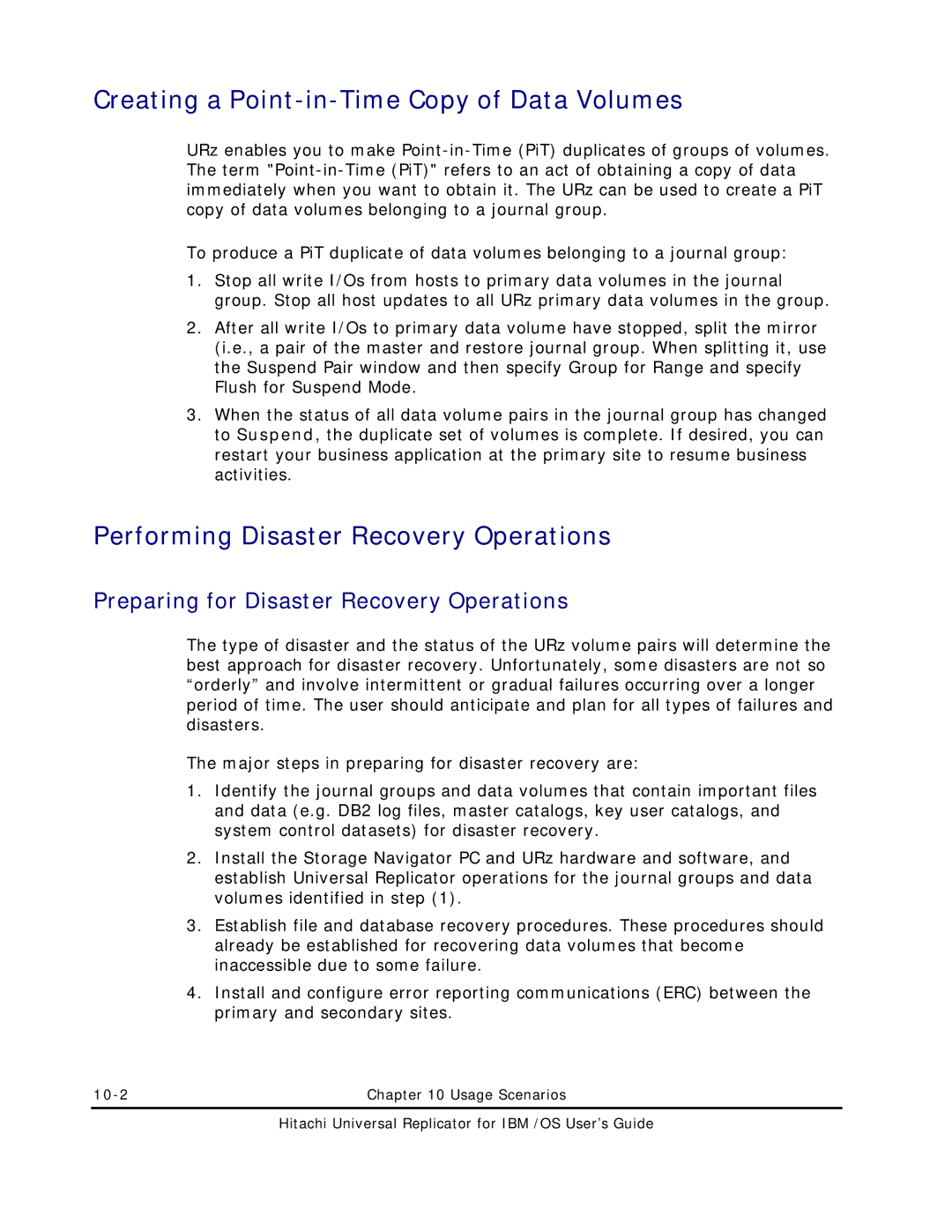Creating a Point-in-Time Copy of Data Volumes
URz enables you to make
To produce a PiT duplicate of data volumes belonging to a journal group:
1.Stop all write I/Os from hosts to primary data volumes in the journal group. Stop all host updates to all URz primary data volumes in the group.
2.After all write I/Os to primary data volume have stopped, split the mirror (i.e., a pair of the master and restore journal group. When splitting it, use the Suspend Pair window and then specify Group for Range and specify Flush for Suspend Mode.
3.When the status of all data volume pairs in the journal group has changed to Suspend, the duplicate set of volumes is complete. If desired, you can restart your business application at the primary site to resume business activities.
Performing Disaster Recovery Operations
Preparing for Disaster Recovery Operations
The type of disaster and the status of the URz volume pairs will determine the best approach for disaster recovery. Unfortunately, some disasters are not so “orderly” and involve intermittent or gradual failures occurring over a longer period of time. The user should anticipate and plan for all types of failures and disasters.
The major steps in preparing for disaster recovery are:
1.Identify the journal groups and data volumes that contain important files and data (e.g. DB2 log files, master catalogs, key user catalogs, and system control datasets) for disaster recovery.
2.Install the Storage Navigator PC and URz hardware and software, and establish Universal Replicator operations for the journal groups and data volumes identified in step (1).
3.Establish file and database recovery procedures. These procedures should already be established for recovering data volumes that become inaccessible due to some failure.
4.Install and configure error reporting communications (ERC) between the primary and secondary sites.
Chapter 10 Usage Scenarios |
